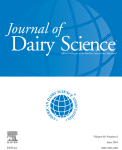View Item
- xmlui.general.dspace_homeCentros Regionales y EEAsCentro Regional Santa FeEEA RafaelaArtículos científicosxmlui.ArtifactBrowser.ItemViewer.trail
- DSpace Home
- Centros Regionales y EEAs
- Centro Regional Santa Fe
- EEA Rafaela
- Artículos científicos
- View Item
Effect of high-pressure treatment on hard cheese proteolysis
Abstract
The application of high hydrostatic pressure (HHP) treatment has been proposed to reduce the ripening time of cheese via modifications in the enzymatic activities or the substrate reactivity. Investigations on the effect of HHP on cheese proteolysis have been undertaken with either encouraging results or little effect according to the treatment conditions and the type of cheese, but information concerning the effect of HHP on the ripening of hard cooked
[ver mas...]
The application of high hydrostatic pressure (HHP) treatment has been proposed to reduce the ripening time of cheese via modifications in the enzymatic activities or the substrate reactivity. Investigations on the effect of HHP on cheese proteolysis have been undertaken with either encouraging results or little effect according to the treatment conditions and the type of cheese, but information concerning the effect of HHP on the ripening of hard cooked cheese is still lacking. In this report, we describe the effect of HHP treatment on Reggianito cheese proteolysis. For that purpose, 1-d-old miniature cheeses (5.5-cm diameter and 6-cm height) were treated at 100 or 400 MPa and 20°C for 5 or 10 min, and control cheeses in the trial were not pressurized. All cheeses were ripened at 12°C during 90 d. The HHP did not affect gross composition of the cheeses, but microbial load changed, especially because the starter culture count was significantly lower at the beginning of the ripening of the cheeses treated at 400 MPa than in controls and cheeses treated at 100 MPa. Cheeses treated at 400 MPa for 10 min had significantly higher plasmin activity than did the others; the residual coagulant activity was not affected by HHP. Proteolysis assessment showed that most severe treatments (400 MPa) also resulted in cheeses with increased breakdown of αS1- and β-CN. In addition, nitrogen content in soluble fractions was significantly higher in cheeses treated at 400 MPa, as well as soluble peptides and free AA production. Peptide profiles and individual and total content of free AA in 60-d-old treated cheese were as high as in fully ripened control cheeses (90 d). Holding time had an effect only on pH-4.6-soluble nitrogen fraction and plasmin activity; cheese treated for 10 min showed higher values than those treated for 5 min, at both levels of pressure assayed. We concluded that HHP treatments at 400 MPa applied 1 d after cheesemaking increased the rate of proteolysis, leading to an acceleration of the ripening process in Reggianito Argentino cheese, whereas 100-MPa treatments did not lead to significant changes.
[Cerrar]

Author
Costabel, Luciana Maria;
Bergamini, Carina Viviana;
Vaudagna, Sergio Ramon;
Cuatrin, Alejandra;
Audero, Gabriela Maria;
Hynes, Erica Rut;
Fuente
Journal of Dairy Science 99 (6) : 4220-4232 (June 2016)
Date
2016-06
ISSN
0022-0302
1525-3198
1525-3198
Formato
pdf
Tipo de documento
artículo
Palabras Claves
Derechos de acceso
Abierto
 Excepto donde se diga explicitamente, este item se publica bajo la siguiente descripción: Creative Commons Attribution-NonCommercial-ShareAlike 2.5 Unported (CC BY-NC-SA 2.5)
Excepto donde se diga explicitamente, este item se publica bajo la siguiente descripción: Creative Commons Attribution-NonCommercial-ShareAlike 2.5 Unported (CC BY-NC-SA 2.5)


